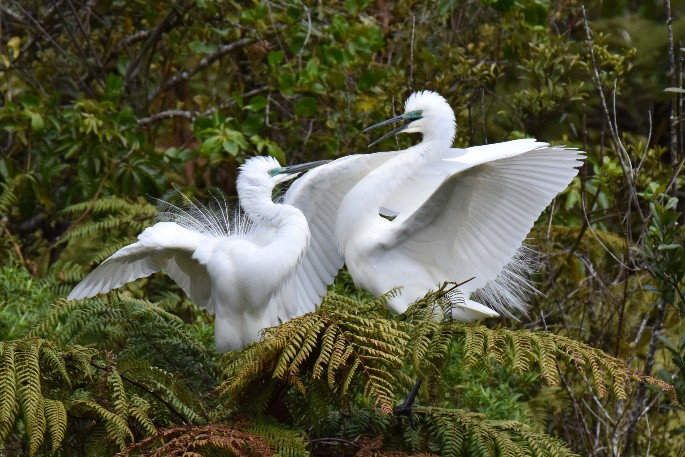This Content Is Only For Subscribers
The rare kōtuku (white heron) has returned to its ancestral nesting site in South Westland for the new breeding season, this time to a landscape free of stoats, rats and possums.
The kōtuku has always been rare in New Zealand, revered for its elegant plumage and holding a special place in both Māori and Pākehā traditions. While common in Australia and Asia, here it is classed as nationally critical, with only around 150–200 birds. For reasons still not fully understood, it breeds in just one place in the country – the Waitangiroto Nature Reserve near Whataroa – where nests are built high in kahikatea swamp forest.
Each spring the birds migrate back, but this year their arrival follows a major conservation milestone.
Over the past six years, Zero Invasive Predators (ZIP) has led a project to remove introduced pests from 114,000 hectares stretching from the Southern Alps to the Tasman Sea. With more than 90 per cent of the block now predator-free, the focus is on high-tech tools to keep it that way.
Last season was the first in which kōtuku chicks were raised without the threat of predation.
Dion Arnold of White Heron Sanctuary Tours says the results were striking: 59 nesting pairs, 45 successful nests, and a total of 65 fledged chicks – “one of the best breeding seasons on record”.
“Having no pests, especially stoats, is fantastic not only for the kōtuku but for all the other birdlife. We can hear and see the difference it has made within the reserve and the surrounding area.
“The forest has also had a real boost. Without possums and rats destroying the new growth, we are seeing delicate little ferns, wild orchids and fruiting trees make a big comeback. It is very exciting for us locals who have lived here all our lives to see the positive changes this project is making in such a short time.”
Andrew Aitken, development West Coast destination and tourism manager, says the success of the predator-free programme is not only a win for conservation, but also for the wider tourism industry.
“The West Coast’s untamed natural wilderness is a real drawcard. As the natural environment thrives, visitors get an even better experience, and that supports local businesses and communities,” he says.
With kōtuku once again settling into their nests, hopes are high for another bumper season.
“Thanks to the combined efforts of ZIP, DOC and the entire South Westland community, our region is well on its way to becoming New Zealand’s largest predator-free landscape,” Dion says. “This is a monumental achievement that truly places South Westland at the forefront of the Predator Free movement.”



